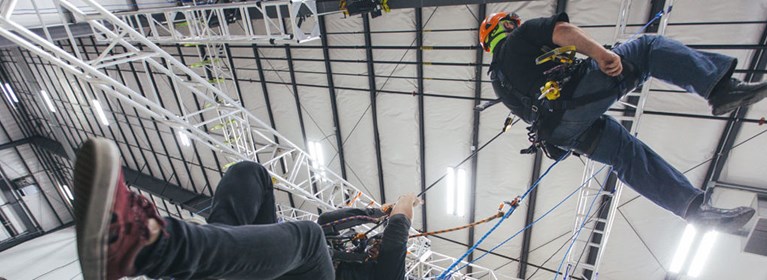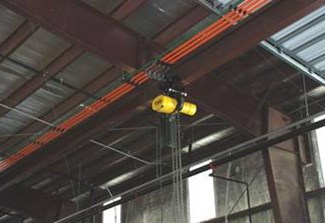
Grounding of Overhead Crane Systems
Crane Systems | by Columbus McKinnon Training | 17 Jun 2010
In 1995, the Bureau of Labor Statistics reported that electrocutions accounted for 6% of all worker deaths. The most common OSHA electrical violation is the improper grounding of equipment and circuitry. It routinely hits the top 25 in terms of OSHA citations.
Grounding is a critical part of a safe installation.

Our customer service group periodically receives calls with questions concerning grounding requirements for overhead cranes. Over the years it has been customary to ground through the crane and trolley wheels, through the crane girders and runways to the building steel.
In the 2005 edition of ANSI/NFPA 70 National Electric Code grounding requirements changed. Article 610, Cranes and Hoists, Section 610.61 Grounding clearly states, “The trolley frame and bridge frame shall not be considered electrically grounded through the bridge and trolley wheels and its respective tracks. A separate bonding conductor shall be provided.” The terms “shall and shall not” make the fourth conductor for ground mandatory. It does not matter if the electrification is festoon cable or insulated conductor bar.
Question: “My hoist will be running on a jib or a monorail. Do I still have to run a ground?”
The simple answer is, “Yes!” The scope of Section 610.1 is quite clear; it covers cranes, monorail hoists, hoists and all runways. ANSI/ASME B30 Safety Standards define cranes for overhead hoists. In essence, if a hoist is supported by an overhead structure such as a monorail, jib, bridge, or gantry, it is a crane. Whether the crane is portable, like a roll around gantry, or a permanent installation, it is a crane and needs a separate conductor for ground.
Grounding is a critical part of a safe installation. More and more cranes are equipped with electronics; remote controls, variable frequency, electronic monitoring devices, etc. These need grounding for their protection. Current follows the path of least resistance. If a short to ground exists, do you want the crane operator to be the ground? All it takes is one hand on the lower block and the circuit is complete. Be safe, run the ground.

 United Kingdom - EN
United Kingdom - EN
